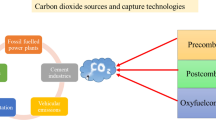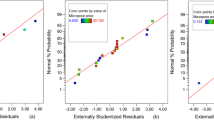Abstract
Activated carbon (AC) is an effective adsorbent that is used in a wide range of applications. This is due to its high adsorption capacity and fast removal rate. This study evaluated processing conditions for synthesizing AC from coal pitch. The objective was to establish what processing conditions produced AC with the best adsorption performance. Factors such as carbonization temperature, activation temperature, steam flow rate and the addition of additives have been studied. A real-time, fixed-bed mercury adsorption system was used to evaluate the AC prepared from coal pitch. Results showed that the temperature and the KOH mixing rate in the carbonization process play an important role in the formation of the functional groups on the surface of the char. Additionally, the temperature and the steam flow rate in the activation process significantly affects AC surface area and pore distribution, important factors relating to mercury adsorption performance.













Similar content being viewed by others
References
Spahis N, Addoun A, Mahmoudi H, Ghaffour N. Purification of water by activated carbon prepared from olive stones. Desalination. 2008;222(1):519–27.
De M, Azargohar R, Dalai AK, Shewchuk SR. Mercury removal by bio-char based modified activated carbons. Fuel. 2013;103(1):570–8.
Sumathi S, Bhatia S, Lee KT, Mohamed AR. Selection of best impregnated palm shell activated carbon (PSAC) for simultaneous removal of SO2 and NOx. J Hazard Mater. 2010;176(1):1093–6.
Zhou J, Hao S, Gao L, Zhang Y. Study on adsorption performance of coal based activated carbon to radioactive iodine and stable iodine. Ann Nucl Energy. 2014;72(5):237–41.
Horikawa T, Takeda I, Muroyama K, Ani FN. Preparing activated carbon from various nutshells by chemical activation with K2CO3. Carbon. 2002;40(2):2381–6.
Zheng Y, Jensen AD, Windelin C, Windelinb C, Jensen F. Review of technologies for mercury removal from flue gas from cement production processes. Prog Energ Combust. 2012;38(5):599–629.
Scala F, Chirone R, Lancia A. Elemental mercury vapor capture by powdered activated carbon in a fluidized bed reactor. Fuel. 2011;90(6):2077–82.
Sjostrom S, Durham M, Jean Bustard C, Martin C. Activated carbon injection for mercury control: overview. Fuel. 2010;89(6):1320–2.
Hutson ND, Ryan SP, Touati A. Assessment of PCDD/F and PBDD/F emissions from coal-fired power plants during injection of brominated activated carbon for mercury control. Atmos Environ. 2009;43(26):3973–80.
Graydon JW, Zhang X, Kirk DW, Jia CQ. Sorption and stability of mercury on activated carbon for emission control. J Hazard Mater. 2009;168(2):978–82.
Derenne S, Sartorelli P, Bustard J, Stewart R, Sjostrom S, Johnson P, McMillian M, Sudhoff F, Chang R. TOXECON clean coal demonstration for mercury and multi-pollutant control at the Presque Isle Power Plant. Fuel Process Technol. 2009;90(11):1400–5.
Ghorishi SB, Keeney RM, Serre SD, Gullett BK, Jozewicz WS. Development of a Cl-impregnated activated carbon for entrained-flow capture of elemental mercury. Environ Sci Technol. 2002;36(20):4454–9.
Uysal T, Duman G, Onal Y, Yasa I, Yanik J. Production of activated carbon and fungicidal oil from peach stone by two-stage process. J Anal Appl Pyrol. 2014;108(7):47–55.
Arriagada R, García R, Molina-Sabio M, Rodrigue-reinose F. Effect of steam activation on the porosity and chemical nature of activated carbons from Eucalyptus globulus and peach stones. Micropor Mater. 1997;8(3):123–30.
Zhong L, Zhang Y, Liu Z, Sui ZF, Cao Y, Pan WP. Study of mercury adsorption by selected Chinese coal fly ashes. J Therm Anal Calorim. 2014;116(3):1197–203.
Jibril B, Houache O, Al-Maamari R, Al-Maamari B. Effects of H3PO4 and KOH in carbonization of lignocellulosic material. J Anal Appl Pyrol. 2008;83(2):151–6.
Figueiredo JL, Pereira MFR, Freitas MMA, Orfao JJM. Modification of the surface chemistry of activated carbons. Carbon. 1999;37(9):1379–89.
Acknowledgements
This research is supported by the National High Technology Research and Development Program of China (863 program) (No. 2013AA065404).
Author information
Authors and Affiliations
Corresponding author
Rights and permissions
About this article
Cite this article
Zhong, L., Zhang, Y., Ji, Y. et al. Synthesis of activated carbon from coal pitch for mercury removal in coal-fired power plants. J Therm Anal Calorim 123, 851–860 (2016). https://doi.org/10.1007/s10973-015-4966-5
Received:
Accepted:
Published:
Issue Date:
DOI: https://doi.org/10.1007/s10973-015-4966-5




